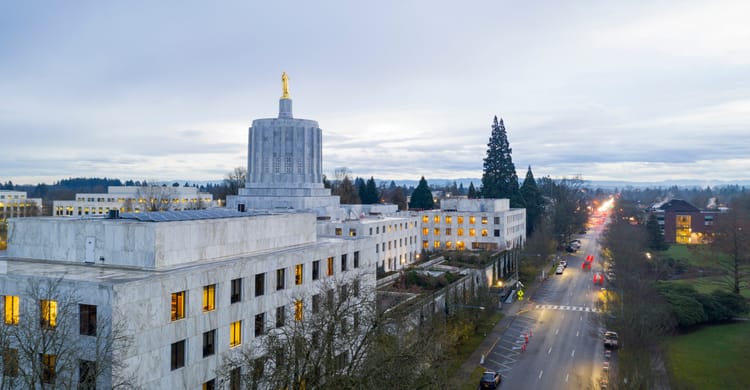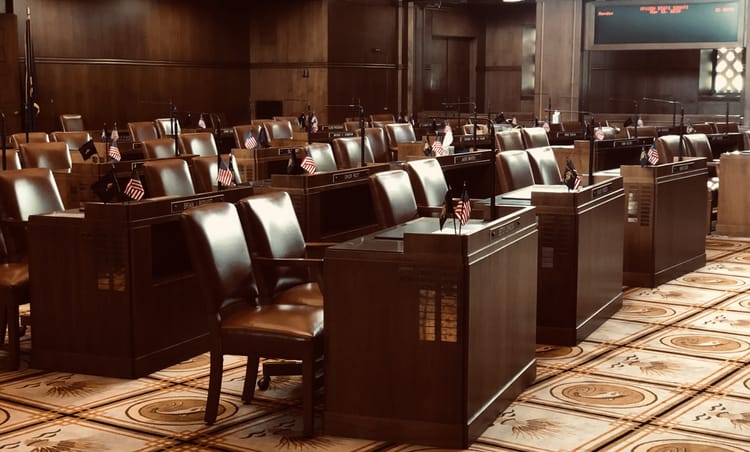Oregon’s Political Preseason

The Takeaway
Fans of the Miami Dolphins were flying high after this year’s NFL preseason. The team didn’t lose a game, and on paper, everything seemed to be clicking. Of course, anyone who follows professional football knows preseason games are mostly about evaluating rookies and backups, not the stars who will decide whether the season is a success. Without that context, it’s easy to mistake early wins as a bellwether for the rest of the season. (Sorry, Dolphins fans, but two wins in nine weeks of real football tells a different story.)
This week’s election was a lot like preseason football. The seats in the stadium were not filled and the fans who did show up were mostly diehards. The starting lineup was sitting on the sidelines. Turnout was low, the contests were local, and most Oregonians barely noticed that a game was being played.
Still, preseason matters in its own way. It provides us with an early look at how the playbook might perform under real-world conditions, identifying which issues resonate and fall short, as well as whether the fundamentals remain intact. Voters in the Portland area have a strong track record of supporting local funding measures, with only a few high-profile failures in recent memory. Those fundamentals hold; however, the foundation seems to have some cracks.
By my count, 18 of 30 local funding measures in Oregon are passing as of election night. pic.twitter.com/31S9HiwfZE
— John Horvick (@horvick) November 5, 2025
Portland area voters approved relatively high-profile (again, for a preseason contest) measures to fund parks in the city. Similarly, the Portland suburbs supported new and increased taxes for libraries, parks, and schools. Some of those measures were approved by closer margins, perhaps suggesting unease towards taxes, but voters nevertheless approved of them.
A different story unfolded outside of the Portland metro area. Measures seeking to increase taxes to expand community events and recreation centers in Happy Valley, McMinnville, and Stayton were rejected. In Sandy, residents refuted an annexation attempt by the Clackamas Fire District, which already serves the city under contract, requiring property owners to pay more for services they already receive. Sandy voters also rejected a school construction bond for a football field and other facility enhancements that would have nearly doubled taxes paid to the district. And rural voters in Lane County rejected two proposals to double property tax levies for fire and emergency services.
After the election, some people seemed to have takes declaring this election as some sort of voter reckoning against taxes. While that would indeed be interesting, it does not seem at all accurate. It is a bit like Dolphins fans declaring a Super Bowl run after the preseason — entertaining, maybe even hopeful, but not exactly rooted in reality. Many of the rejected funding measures were ambitious or leaned toward the “nice-to-have” side of the ledger, such as recreation centers and facility upgrades, and they coincided with a political moment marked by a higher cost of living and a federal government shutdown. Voters may be more discerning about new taxes, but that does not mean they have turned against them altogether.
In our politics, we tend to think of taxes as a binary issue — good versus evil — but reality is far more nuanced. Most voters approach local funding decisions with a mix of pragmatism and skepticism. They will support a measure when it feels necessary, tangible, and accountable, and they will reject it when it feels excessive or poorly timed. That is not ideological; it is practical.
This week’s results reinforce that pattern. Oregon voters still distinguish between what they want and what they are willing to pay for. In Portland, voters recognized the value of promoting the parks and libraries they use every day. Outside the metro area, where economic pressures are felt more sharply and trust in government is thinner, many measures failed to meet that test.
It is also worth remembering that local elections like this are decided by the most engaged voters — the political equivalent of preseason diehards. These voters tend to be older and more opinionated about how tax dollars are spent. When turnout climbs next year for the midterms, those margins and motivations will likely shift.
The fundamentals remain: Oregonians will invest when the need is clear and trust has been earned. Voters have not benched local investment; they are just keeping a closer eye on the sidelines to make sure the front office is ready and able to deliver.





